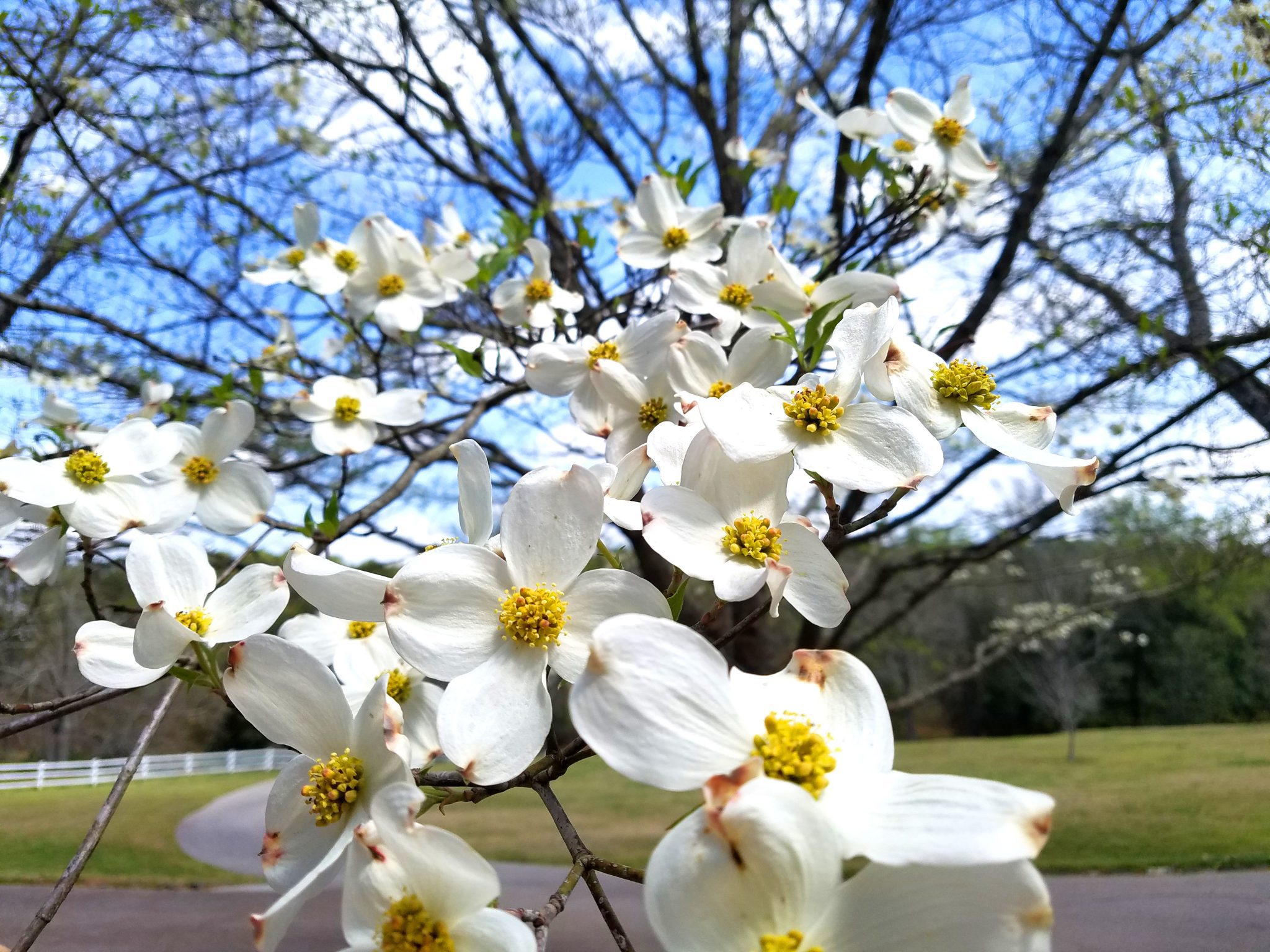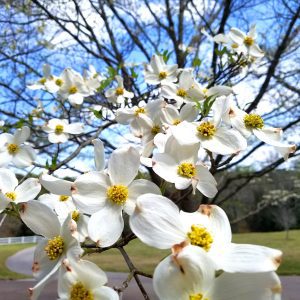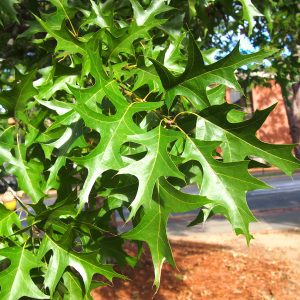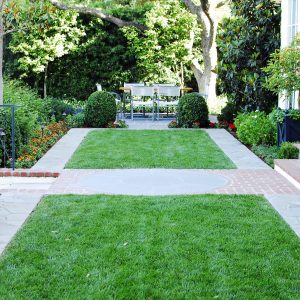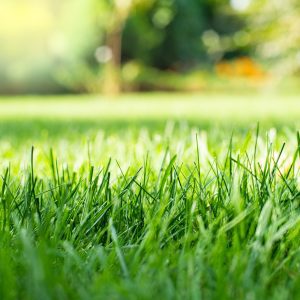Landscaping

Match Plants to the Site
Choosing plants is a fun part of landscaping. Before you plant, consider several factors. Placing the right plant in the right place grows healthier plants and minimizes problems.
You Will Need:
Research
Site Observations
Local Plants
Shovel
Water Hose
Mulch
- Consider soil type. Drought-tolerant plants thrive on elevated dry spots. Still, they may succumb to root diseases when planted in low, wet areas. Plants adapted to wet soils often need areas with poor drainage. Learn what the plant needs.
- Select and position trees for maximum shading. Plant deciduous shade trees on your house’s south, east, or west sides. These trees will cast shade in the summer and let in warming light during winter. Positioning trees and shrubs strategically can improve your home’s heating
and cooling capacity. - Group plants by their growth requirements. Combine plants according to their water, sunlight, fertilizer, and maintenance needs. Reduce maintenance and conserve water.
- Shop locally. Alabama’s climate supports countless varieties of plants, many of which are grown by local nurseries.
- Properly space landscape plants and accommodate for growth as they mature.
- Florida dogwood (Cornus florida) is a native understory tree that blooms in spring. Its fruits and flowers support a variety of wildlife. It grows best under afternoon shade.
- Nuttall oak (Quercus texana) is planted to create shade. It is drought tolerant once established, has a medium to fast growth rate, and displays showy fall color. Oaks support a variety of wildlife.
Native Plants
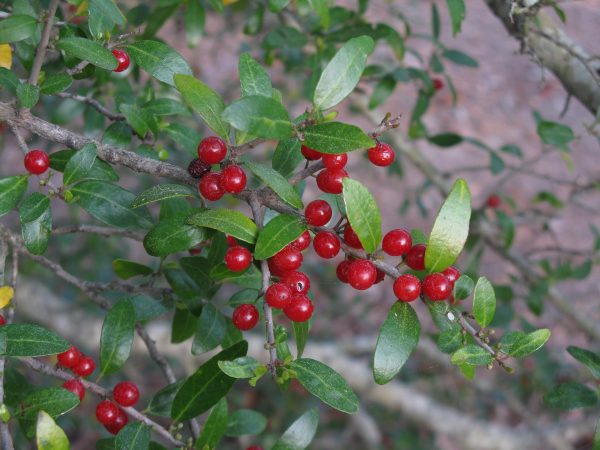
Yaupon holly (Ilex vomitoria) is a native small tree or shrub adapted to a variety of soil types. Fruiting varieties attract numerous wildlife species. The flowers support many native insects.
Native plants occur naturally in regions, states, ecosystems, and habitats without direct or indirect human interaction. Some Alabama native plants are widely available. Others become more available as demand increases.
You Will Need:
Research
Site Observations
Local Plants
Shovel
Water Hose
Mulch
- Native does not mean sacrifice. Some of our most beautiful landscaping plants are natives.
- Native plants serve as valuable resources for pollen, nectar, and forage for pollinators and other beneficial insects. Some beneficial insects help reduce pests in your vegetable garden and yard.
- Native plants support native wildlife.
- Avoid planting invasive species. These non-native species crowd out native plants and can seriously threaten Alabama’s ecosystems and wildlife.
- If invasive species are already present in your yard, remove them. Examples of invasive species are privet, popcorn tree, and Chinese wisteria.
- Visit parks, wildlife preserves, botanical gardens, and nurseries to see native plants. Observing their growth habit and mature size helps you make smart choices.
- Visit libraries or bookstores, especially those in botanical gardens, and web resources such as the Lady Bird Johnson Wildflower Center to find good reference information on Alabama native plants.
- Plant natives in the right place. Just because a plant is native does not guarantee its success if planted where it cannot thrive.
Home Lawns
Home lawns are often a focal point in the landscape. A healthy lawn is a functional space for many family activities. It also prevents soil erosion, cools temperatures on hot days, and absorbs airborne pollutants.
You Will Need:
Research
Site Observations
Family Plan
Water Hose
Sprinkler (optional)
Soil Test
- Selecting turfgrass. This may be the most essential factor in establishing and maintaining an attractive and lower-maintenance lawn. Five turfgrasses are recommended for Alabama home lawns: bermudagrass, centipedegrass, St. Augustinegrass, tall fescue, and zoysiagrass. Each differs in appearance and has different mowing and fertilizer needs.
- Slopes. Mowing grass on slopes is difficult, so avoid planting turf where it cannot be easily cut. Consider using other groundcovers on slopes.
- Right plant, right place. The turfgrass species adapted to Alabama do not tolerate long periods of wet soil. Three of these, St. Augustinegrass, zoysiagrass, and tall fescue, can tolerate growing under trees for a short time. All three will need replacing within a few years.
- Fescue grows best in northern Alabama yards.
- St. Augustine grows best in central to southern Alabama yards.
- Design your lawn to be functional. Avoid treating it as a space filler. Consider and plan how you will use it.
- Water a new lawn daily for the first 7 to 10 days (more than once daily might be needed during hot weather), and then 1 to 3 times a week for the next month.
- To stay green and avoid summer dormancy, a well-established lawn might only need supplemental water once or twice per month.
- Allowing summer dormancy in southern lawns saves water.
- Fertilize appropriately. Fertilize only when the lawn needs it and never when it is dormant. Fertilizers containing nitrogen are ONLY useful when the lawn is green.
- Whether your lawn is large or small, design its size for your family’s activities.
Table 1. Characteristics of Turfgrasses Recommended for Use on Home Lawns in Alabama
2 Sunlight: Full = at least 8 hours of sunlight; Partial = at least 6 hours of sunlight; Shade = at least 4 hours of sunlight
3 Common bermudagrass types only
4 Maintenance level: Low = fewer than 2 fertilizations per year; Medium = 2 to 4 fertilizations per year; High = more than 4 fertilizations per year
| Condition | Bermudagrass | Centipedegrass | St.Augustinegrass | Tall Fescue | Zoysiagrass |
|---|---|---|---|---|---|
| Adaptation1 | N,C,S | C,S | C,S | N | N,C,S |
| Drought Tolerance | Excellent | Good | Good | Fair | Excellent |
| Sunlight2 | Full | Full to Partial | Full to Shade | Full to Shade | Full to Partial |
| Salt Tolerance | Good | Poor | Good | Poor | Good |
| Wear Tolerance | Excellent | Poor | Poor | Fair | Excellent |
| Soil pH | 5.5 to 7.0 | 5.5 to 7.0 | 5.5 to 7.0 | 5.5 to 7.0 | 5.5 to 7.0 |
| Establishment Methods | Sprigs, Plugs, Sod, Seed3 | Sprigs, Plugs, Sod, Seed | Sprigs, Plugs, Sod | Sod, Seed | Sprigs, Plugs, Sod, Seed |
| Leaf Color | Medium to Dark | Light | Medium to Dark | Medium | Medium to Dark |
| Leaf Texture | Medium to Fine | Coarse to Medium | Coarse | Coarse to Medium | Coarse to Fine |
| Maintenance Level4 | Medium to High | Low | Medium | Medium | Medium |
| Mowing Height | 1 to 2 inches | 1 to 2 inches | 2 1⁄2 to 4 inches | 2 to 3 1⁄2 inches | 1 to 2 inches |
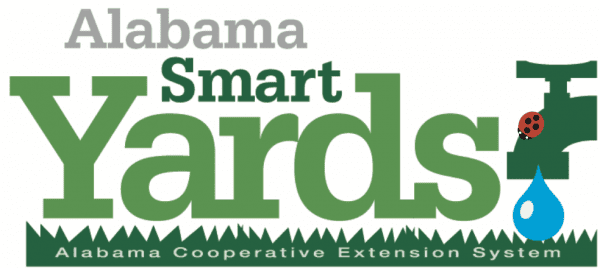
 Kerry Smith, Administrator, Outreach Programs, Horticulture, Auburn University
Kerry Smith, Administrator, Outreach Programs, Horticulture, Auburn University
Revised November 2023, Right Plant Right Place – Smart Yards Recipe Series, ANR-2872-A

